節奏感是先天的嗎? 學識以下練習令你的演奏更有節奏感更出色

節奏感是先天的嗎?
一個簡單的答案,不是!
很多人練習時發覺自己拍子總是怪怪的,或者自彈自唱一直搭不起來,有人因此懷疑自己是不是沒有天份彈吉他。
但到底是甚麼問題呢?其實只是「沒有練熟」。如果你有類似的問題,可以先試從簡單的歌曲開始練習,以「一拍一下」的模式慢慢練,因為欲速則不達,不要彈太快。
最理想是跟著節拍器練習,保持固定的速度,培養良好的習慣,到熟悉了「一拍一下」後再來漸進式地加快或做更複雜的節奏練習。節奏感是靠著不斷練習累積出來的!
節拍器
使用節拍器之前,你必須對樂曲有基本的熟練程度,剛開始用節拍器一定會覺得很痛苦,總是太快或太慢而對不上,但這是很普遍的情況,最起碼你能察覺自己的問題,慢慢調整到跟節拍器一樣的速度就好。
一開始不要調太快,調到一個可以跟的上的速度,只要不斷練習,右手有規律的重複練習同一個節奏,一定可以穿越這困難。
基本概念
什麼叫4、8、16 分音符?

拍子記號Time Signature
最常見的拍子記號有4/4, 3/4
而它其實是指:
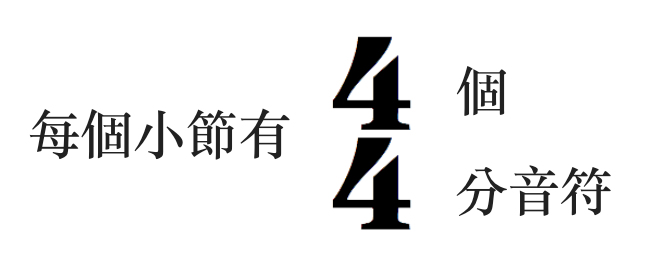
節奏著重「拍子」與「小節」
拍子與小節是重要概念,認識一個固定節奏循環或週期的必要知識。四四拍(4/4 拍)表示有四個四分音符,三四拍(3/4拍)表示有三個四分音符,都在一小節的循環內組成,並以一個四分音符作為一拍。這是掌握節奏最重要的基本單位。表演時台上台下能否產生共鳴,全都取決於人們能否共同感覺這一拍。
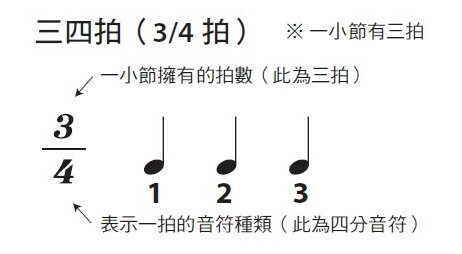
節奏的反複循環
以四四拍為例,由四個四分音符組成一次循環的,音樂將以「(第一次)1,2,3,4、(第二次)1,2,3,4」的週期重複。請一定要好好感受這種循環,才能正確掌握節奏感。
自己獨立的節奏感
每個人都擁有獨立的節奏感,以這作為基礎與他人共享和合奏。曾經有人表示:「使用節拍器練習時,不是利用節拍器保持你的節奏,而是要讓自己的節奏與節拍器共享。」
出色的樂團不是只是仰賴播放的音樂來演奏,而是先建立自己的節奏感,以此作為基礎,與音樂融合。
節奏感的練習
其中一個節奏練習的好處是你不需要吉他,可以隨時練習。
你將會在不能看歌曲或是riff,用一般的感覺開始練習節奏。節奏是所有音樂的最基本組成元素,所以如果你獨立的練習,接著所有你彈的東西都會變得簡單很多。我們可以像個鼓手一樣思考。
你需要的只是空出幾分鐘的時間,這樣的好處是在任何時間,你都可以進步。
唱數是什麼?
在一些教學影片或書中,鼓手講解樂句時,會一邊打鼓,一邊喊著「One& Two & Three & Four」。教學書亦會在樂譜的音符上方標示出唱數「One & Two & Three & Four」,並且提醒「請一邊打鼓,一邊喊出來」。
唱數就像一把尺,能正確地建立基本循環。首先,在自己心中具體感受,再來慢慢添加表現力與情感,這是很重要的步驟。
練習實際講解
接下來的練習都是4/4拍,這也是最常見的音樂節奏形式。除此之外,強烈推薦你用一個節拍器,這會大大幫助你的訓練,保持穩定的節奏。
- 一開始,先設定節拍器每響一次代表一拍,然後簡單地大聲數出1.2.3.4.1.2.3.4……。
- 接著,開始在每個「1」輕敲或拍手,這時節拍器每響四次,就應該有一聲,以下凸顯出的顏色你該拍的節拍:(1), 2, 3, 4, (1), 2, 3, 4
- 接著,在第三拍跟第一拍一樣拍手,像這樣:(1),2,(3),4,(1),2,(3),4
- 最後,在每拍都輕拍一下,在每拍都大聲數出來是很重要的,要確定你的嘴唇有在動,大聲數出來可以引導你對拍點的感覺。
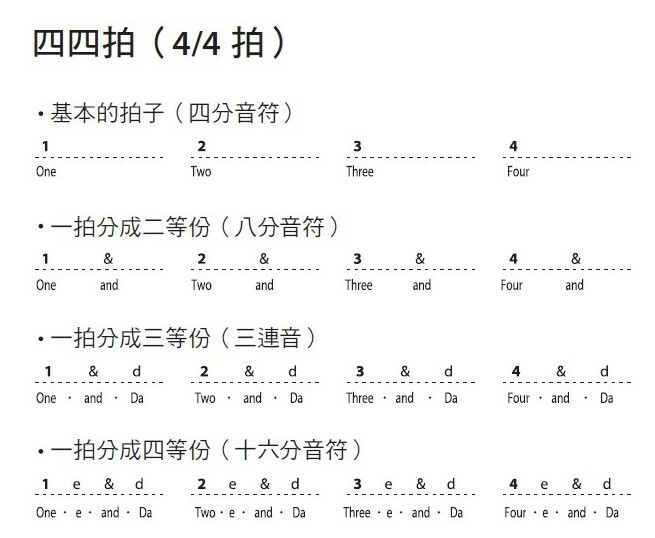
等到你熟了以上練習後,你可以增加難道加入8分音符並嘗試不同的組合如:
(1), &, 2, (&), (3), &, 4, &, (1), &, 2, (&), (3), &, 4, &…
(1), &, (2), &, 3, (&), 4, (&), (1), &, (2), &, 3, (&), 4, (&)…
_______________________________________________________________________________________________________________________________
Is the sense of rhythm inherent? Learn the following exercises to make your performance more rhythmic and better

Is the sense of rhythm inherent?
A simple answer, no!
When practicing, many people find that their rhythm are always weird, or that they can't play and sing at the same time, and some people wonder if they have no talent to play the guitar.
But what is the problem? In fact, it's just "not enough practice." If you have similar problems, you can try to practice from simple songs first and practice slowly in the "one beat" mode, because haste is not fast, so don't play too fast.
The ideal is to practice with the metronome, maintain a fixed speed, develop good habits, and gradually accelerate or do more complex rhythm exercises after you are familiar with "one beat". The sense of rhythm is accumulated by continuous practice!
Metronome
Before using the metronome, you must have a basic level of proficiency in music. At the beginning, it will definitely feel painful. It is always too fast or too slow to match, but this is a very common situation. At least you can realize your own problems and slowly adjust to the same speed as the metronome.
Don't adjust it too fast at the beginning, and adjust it to a speed that can keep up. As long as you keep practicing, repeating the same rhythm with your right hand regularly, you will surely be able to overcome this difficulty.
Basic concept
What are the 4th, 8th, and 16th notes?
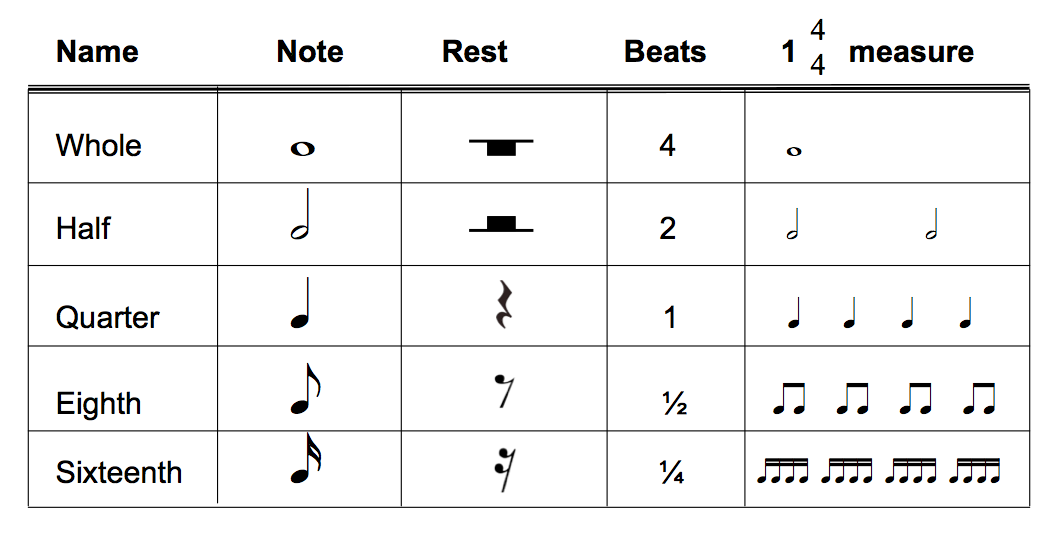
Time Signature
The most common time signs are 4/4, 3/4
And it actually refers to:

Rhythm focuses on "beat" and "bar"
Tempo and bar are important concepts, and it is necessary to know a fixed rhythm cycle or cycle. Four-four beats (4/4 beats) means there are four quarter notes, three-four beats (3/4 beats) means three quarter notes, all composed in a loop of one measure, and one quarter note is used as one beat. This is the most important basic unit to master the rhythm. Whether the performance can resonate on stage or off stage all depends on whether people can feel the beat together.
Repetitive cycle of rhythm
Take four or four beats as an example. If four quarter notes form a loop, the music will have a cycle of "(first time) 1, 2, 3, 4, (second time) 1, 2, 3, 4" repeat. Please be sure to feel this cycle well in order to grasp the sense of rhythm correctly.

Own independent rhythm
Everyone has an independent sense of rhythm, and uses this as a basis to share and ensemble with others. Someone once said: "When practicing with a metronome, you should not use the metronome to maintain your rhythm, but share your rhythm with the metronome."
A great orchestra does not just rely on the music it plays to perform, but first establishes its own sense of rhythm, and uses this as a foundation to integrate with the music.
Rhythmic exercises
One of the advantages of rhythm practice is that you don't need a guitar and can practice at any time.
You will start to practice rhythm with a normal feeling when you can't watch songs or riffs. Rhythm is the most basic element of all music, so if you practice independently, everything you play will become much easier. We can think like a drummer.
All you need is to spare a few minutes. The advantage of this is that you can make progress at any time.
Counting Beats
In some instructional videos or books, when the drummer explains the phrase, he will play the drums while yelling "One& Two & Three & Four". The teaching book will also indicate the number "One & Two & Three & Four" above the notes on the score, and remind you "please play the drums and shout out."
Counting the beats, which can correctly establish a basic loop. First of all, feel concretely in your own mind, and then slowly add expressiveness and emotion. This is a very important step.
Practice practical explanation
The following exercises are all in 4/4 time, which is also the most common music rhythm form. In addition, it is highly recommended that you use a metronome, which will greatly help your training and maintain a stable rhythm.
- In the beginning, set the metronome to represent one beat every time, and then simply count out 1.2.3.4.1.2.3.4... out loud.
- Then, start tapping or clapping your hands at each "1". At this time, the metronome should beep every four times. The following colors highlight the beat you should beat: (1), 2, 3, 4, ( 1), 2, 3, 4
- Then, clap your hands on the third beat like the first, like this: (1),2,(3),4,(1),2,(3),4
- Finally, it’s important to pat every shot and count out loud in every shot. Make sure your lips are moving. Counting out loudly can guide you to the feeling of the shot.
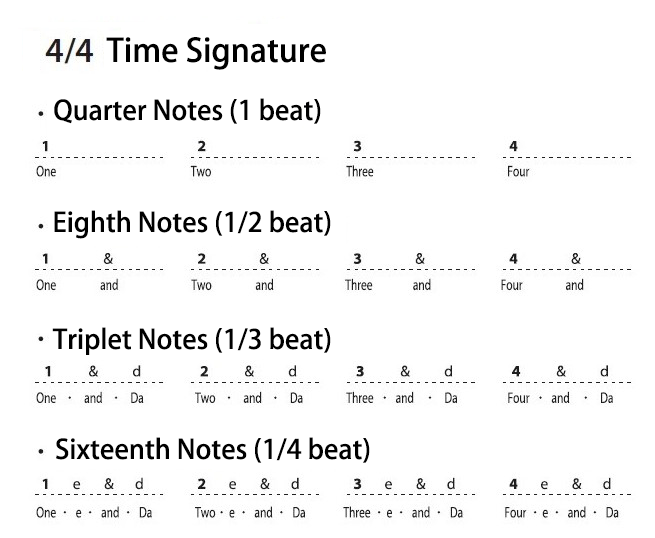
After you are familiar with the above exercises, you can add eighth notes and try different combinations such as:
(1), &, 2, (&), (3), &, 4, &, (1), &, 2, (&), (3), &, 4, &…
(1), &, (2), &, 3, (&), 4, (&), (1), &, (2), &, 3, (&), 4, (&)...










